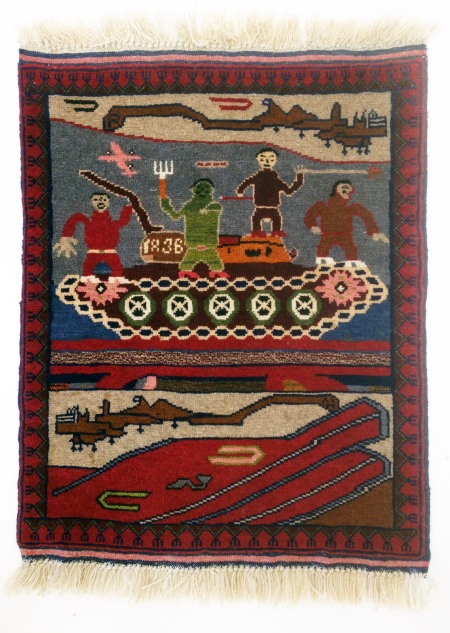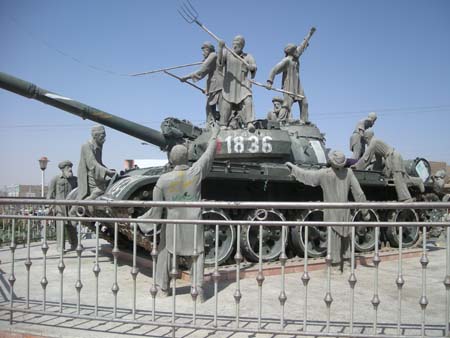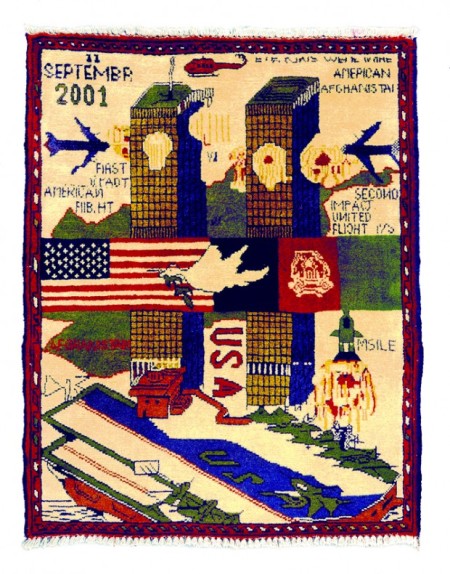I have argued elsewhere that conflict carpets were often conceived as a form of memorialisation – as opposed to a form of celebration of the events of war and conflict. In part, the latter interpretation is due to the degradation of the iconography as rugs are reproduced – endless hand-made copies of copies of copies – until the point is reached where the elements of the original image revert to the traditional norm of pattern-making. Two towers become three, cruise missiles become flowers, text becomes illegible, etc. etc.

Here is an image of a memorial. The Soviet tank with figures climbing on it references the memorial monument at Darb Qandahar, a busy street intersection in Herat. On evidence provided by Nasser Halimi, the monument was created in 2002 on the instigation of the then Governor of Herat Ismail Khan. Nasser has also discovered that the figures were sculpted by a local mason, trained in Iran, named Khalifa Rahman, who now lives in Zeyarat Jah, in Herat province. The monument memorialises the defeat of the Soviets, which (it could be said) began with the Herat uprising in March 1979.

Another version of this image is posted here.
Above and below the image of the tank in the rug under discussion you will see – reversed left and right – a strange brown form which some viewers have thought was a mythical creature, or a cityscape. However this bizarre form, together with the diagonal red sub-structure at the base of the rug, has in fact been ‘borrowed’ from the September 11/World Trade Centre memorial design, where it began its iconographic evolution as the blue and white deck and red and green superstructure one of the three US aircraft supercarriers from which the raids on Osama bin Laden’s hideout in Tora Bora were first launched, as seen in the example below.

See how the superstructure has been detached and deployed (as pattern) above and below the primary image of the tank. Even the letters USA have become detached from their meaning, and float in space as mere decoration. This strange morphology suggests to me three things: that the origin of both these rugs, produced for the souvenir market, is closely related; that the actual makers of such rugs have lost contact with the original designer(s); and that the makers of rugs like these have little or no understanding of the significance of the iconography of the images they are reproducing. All conflict carpets sit somewhere on a spectrum between fine art and souvenir art – which is where such images as these are properly located.
November 25, 2016 at 11:42 pm |
Surely the reversed brown squiggle in the two halves means ‘we will overcome US air power as we did the Russian’s before? Claire.